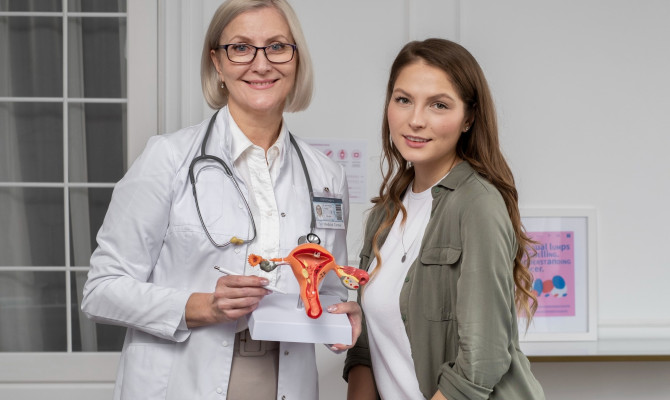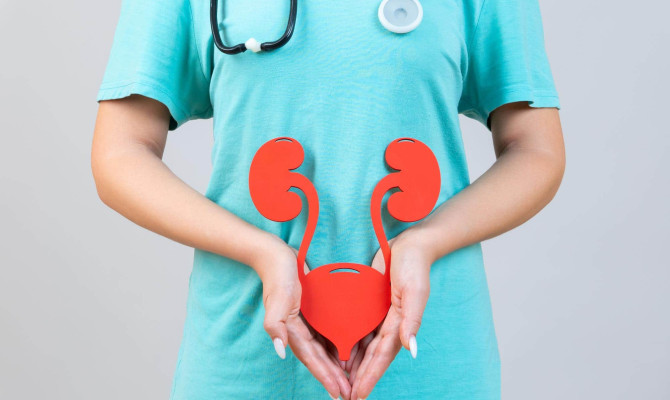Understanding Liver disease: Causes, Symptoms, and Treatment options

- Liver Disease
- 17 Aug 2023
Overview
What is Liver Disease?
The term “liver disease” refers to a wide range of disorders that affect the liver’s ability to function normally, causing structural damage and possibly affecting its ability to perform vital functions.1Overview| Researched based study from Nlm.nih.gov
It is a severe health issue with numerous causes and potential repercussions affecting millions worldwide. This page aims to give a thorough overview of liver disease, covering its causes, signs, and possible treatments.

Symptoms

Symptoms of Liver disease
- Jaundice
- Fatigue and weakness
- Abdominal pain and swelling
- Unexplained weight loss
- Nausea and vomiting
- Itchy skin
- Changes in stool and urine
- Easy bruising and bleeding
- Mental confusion
Symptoms can change depending on the precise type and stage of the disease. It can sometimes develop silently without signs until severe damage has already been done. Some of them include:
Jaundice
- Skin and eye yellowing is a typical sign. The yellow pigment created when red blood cells are broken down, bilirubin, cannot be effectively processed by the liver, causing it to happen.
Weakness
- Constant fatigue, weakness, or low energy are common symptoms. It can be ascribed to liver dysfunction, which impacts how well the body can store and use energy.
Pain in the abdomen
- In the upper right side of the abdomen, it could result in pain and discomfort. Due to fluid retention (ascites), the stomach may also appear enlarged or bloated.
Unexplained weight loss
- A person with severe liver disease may experience sudden and unexpected weight loss. The body’s inability to adequately metabolize nutrients, appetite loss, malnutrition, and other causes may play a role.
Nausea and diarrhea
- It may interfere with digestion, causing nausea, vomiting, and overall feeling unwell.
Changes in the urine and stool
- Stool and urine color and consistency may be affected. Urine may turn darker or deeper, whereas a stool mat appears light, grey, or clay-colored.
Skin itch
- It may result in skin rashes and irritation. This happens because the body accumulates toxins that a healthy liver ordinarily removes.
Easy bruising and bleeding
- Less clotting factors may be produced by a damaged liver, making it easier to bruise and allowing bleeding to last longer.
Mental confusion
- Hepatic encephalopathy, a disorder, may manifest in more severe forms. It might result from cognitive issues, confusion, forgetfulness, and even personality changes.1Symptoms| Researched based study from Nlm.nih.gov
Causes
What are the causes of Liver disease?
- Viral hepatitis
- Alcohol-related liver disease
- Nonalcoholic fatty liver disease
- Autoimmune hepatitis
- Genetic and metabolic disorders
Several factors, such as viral infections, lifestyle decisions, and genetics, may bring it on. Here are a few typical reasons:1Causes| Researched based study from Nlm.nih.gov
Hepatitis virus
- Hepatitis viruses, such as those that cause hepatitis A, B, C, D, and E, can inflame and destroy the liver. If untreated, hepatitis B and C are particularly well known for causing chronic liver disease, which can progress to cirrhosis or liver cancer.
Liver illness brought on by alcohol
- Alcohol abuse that is both excessive and ongoing may be the cause of this. It includes several ailments, such as fatty liver disease, alcoholic hepatitis (liver inflammation), and alcoholic cirrhosis (liver scarring).
Non-alcoholic fatty liver disease.
- A buildup of fat in the liver is a sign of non-alcoholic fatty liver disease (NAFLD), which is usually associated with diabetes, insulin resistance, obesity, and high cholesterol. It is becoming increasingly widespread as a result of the rise in obesity and sedentary lifestyles.1Causes| Researched based study from Nlm.nih.gov
Hepatitis autoimmune
- The body’s immune system accidentally targets the liver, resulting in inflammation and injury. Although the precise reason is unknown, it is thought to result from a mix of hereditary and environmental influences.
Metabolic and Genetic disorders
- Several conditions include hemochromatosis, alpha-1 antitrypsin deficiency, Wilson’s disease (excessive copper accumulation in the liver), and glucagon storage illnesses.
Toxins and Medications
- Extended use of specific drugs, poisons, or substances. These include taking too much paracetamol, using some antibiotics, using too many herbal supplements, and being exposed to industrial pollutants or chemicals.1Causes| Researched based study from Nlm.nih.gov
Other factors
- Various hereditary metabolic problems, vascular diseases, liver-related diseases, liver cancer, primary biliary cholangitis, and rare autoimmune syndromes like these are additional potential causes1Causes| Researched based study from Nlm.nih.gov
Stages
Stages of Liver disease
Stage 1
- Inflammation of the liver occurs during this stage, which can be brought on by viral hepatitis, alcohol addiction, or medications. Although liver enzyme levels may be high, the liver may still be in good health.
Stage 2
- Prolonged inflammation may cause fibrosis, or the formation of scar tissue. Both the normal anatomy and liver function may be affected.
Stage 3
- Cirrhosis, is marked by severe scarring and nodules. Significant liver damage results in a dysfunctional liver.
Stage 4
- End stage liver disease is characterized by extensive organ destruction and severely impaired function7Stages| Researched based study from Nlm.nih.gov
Risk factors
What are the risk factors?
- Excessive alcohol consumption
- Chronic viral infections like hepatitis
- Obesity and nonalcoholic fatty liver disease
- Diabetes
- Prolonged use of medicines like NSAIDs.
- Family history
- Autoimmune conditions like cholangitis and autoimmune hepatitis.
- Risk increases with age and predominantly affects women8Risk factors| Researched based study from Cancer.gov
Diagnosis
Diagnosis of Liver disease
Medical history and physical examination
- Symptoms, risk factors, alcohol usage, family history, and general medical history will all be examined by the doctor. Additionally, a physical examination will determine the size, tenderness, and presence of symptoms like jaundice or abdominal swelling.
A blood test
- These tests include liver function tests (LFTs), which assess the levels of bilirubin, albumin, blood clotting factors, and liver enzymes. Viral hepatitis indicators, such as hepatitis B surface antigen and hepatitis C antibodies, are also evaluated.
Imaging scans
- Imaging methods make the liver’s structure and state apparent.
- Ultrasound is frequently the first imaging test utilized because it is non-invasive and can detect liver abnormalities, including fatty liver, tumors, cysts, or gallstones.
- There may also be a need for additional testing like computed tomography (CT scans), magnetic resonance imaging (MRI), or elastography.
Biopsy
- A liver biopsy may occasionally be necessary to confirm a diagnosis or assess the severity. This will support determining the underlying cause, evaluating the degree of harm, and direct therapy options.
Special examinations
- Additional examinations could be carried out depending on the suspected causes.
- Tests for autoimmune markers, genetic analysis for inherited liver diseases, particular viral load tests for hepatitis viruses, and blood analyses to assess metabolic abnormalities are a few examples of these5Diagnosis| Researched based study from Nlm.nih.gov ,6Diagnosis| Researched based study from Wales.nhs.uk
Treatment
What is the treatment of Liver disease?
Lifestyle modifications
In many cases, changing one’s way of life is essential for treating liver disease.
- Alcohol avoidance, maintaining a healthy weight, consuming a balanced diet low in fat and salt, engaging in regular exercise, and avoiding exposure to pollutants or dangerous chemicals are a few examples.
Medicines
- They may be prescribed to treat underlying infections, regulate inflammation, manage symptoms, or halt disease progression.
- For instance, immunosuppressive medications may be administered for autoimmune liver disease, while antiviral medicines are used to treat chronic viral hepatitis.
Treatment of the underlying cause
- For long-term management, addressing the underlying problem is essential. This can include antiviral treatment, medicines, or metabolic conditions-related therapies.
Supportive treatment
- Using supportive care techniques can reduce symptoms and enhance the quality of life.
- They may include counseling or support groups, dietary support, vitamin and mineral supplementation, and pain management to meet emotional or psychological requirements.
Interventionist techniques.
- These procedures may be necessary for specific conditions. It involves performing endoscopic treatments to resolve problems with the bile ducts, emptying extra fluid from the belly, inserting a shunt to redirect blood flow in cases of portal hypertension, etc.
Liver transplantation
- The only real option for those with end-stage liver disease or liver failure may be a transplant. This requires surgically substituting a healthy liver from a deceased or living donor for the damaged one.
- This can increase long-term survival and offer a possible cure, but it is a problematic treatment that requires careful consideration and lifelong immunosuppressive medicine.3Treatment| Researched based study from Nlm.nih.gov ,4Treatment| Researched based study from Nlm.nih.gov
Can liver disease be cured?
- The specific type and stage of the disease as well as general health are among the factors that will affect this.
- Some types can be effectively treated or cured. For instance, antiviral medications can treat some forms of acute hepatitis. Others, such severe cirrhosis, could not be cured. Treatment in such cases focuses on symptom management, stopping the course, and avoiding complications.
Prevention
How to prevent a Liver disease?
- Limit alcohol consumption.
- Practice safe sex and avoid sharing needles.
- Get vaccinated
- Maintain a healthy weight
- Stay physically active
- Practice safe handling of toxins, chemicals, or industrial substances.
- Maintain a good personal hygiene
- Avoid unnecessary medications or herbal supplements.
- Practice food and water safety.
- Seek regular medical check-ups.2Prevention| Researched based study from Nhs.uk
Any feedback on this article?
 This Articles content was accurate
This Articles content was accurate Very Informative Article
Very Informative Article I have a question or a comment
I have a question or a comment
 This article contains inaccurate content
This article contains inaccurate content This article was not helpful
This article was not helpful I have a question or a comment
I have a question or a comment
We appreciate your helpful feedback!
Checkout our social pages
References
-
National Library of Medicine
Chronic Liver Disease | Overview | Causes | Symptoms
-
National Health Service
Liver disease | Prevention
-
National Library of Medicine
Management of liver diseases: Current perspectives | Treatment
-
National Library of Medicine
Diagnosis and Treatment of Alcoholic Liver Disease and Its Complications | Treatment
-
National Library of Medicine
The Etiology, Diagnosis and Prevention of Liver Cirrhosis | Diagnosis
-
NHS Wales
Cirrhosis | Diagnosis
-
National Library of Medicine
Hepatocellular Carcinoma | Stages
-
National Cancer Institute
Liver Cancer Causes, Risk Factors, and Prevention | Prevention




































